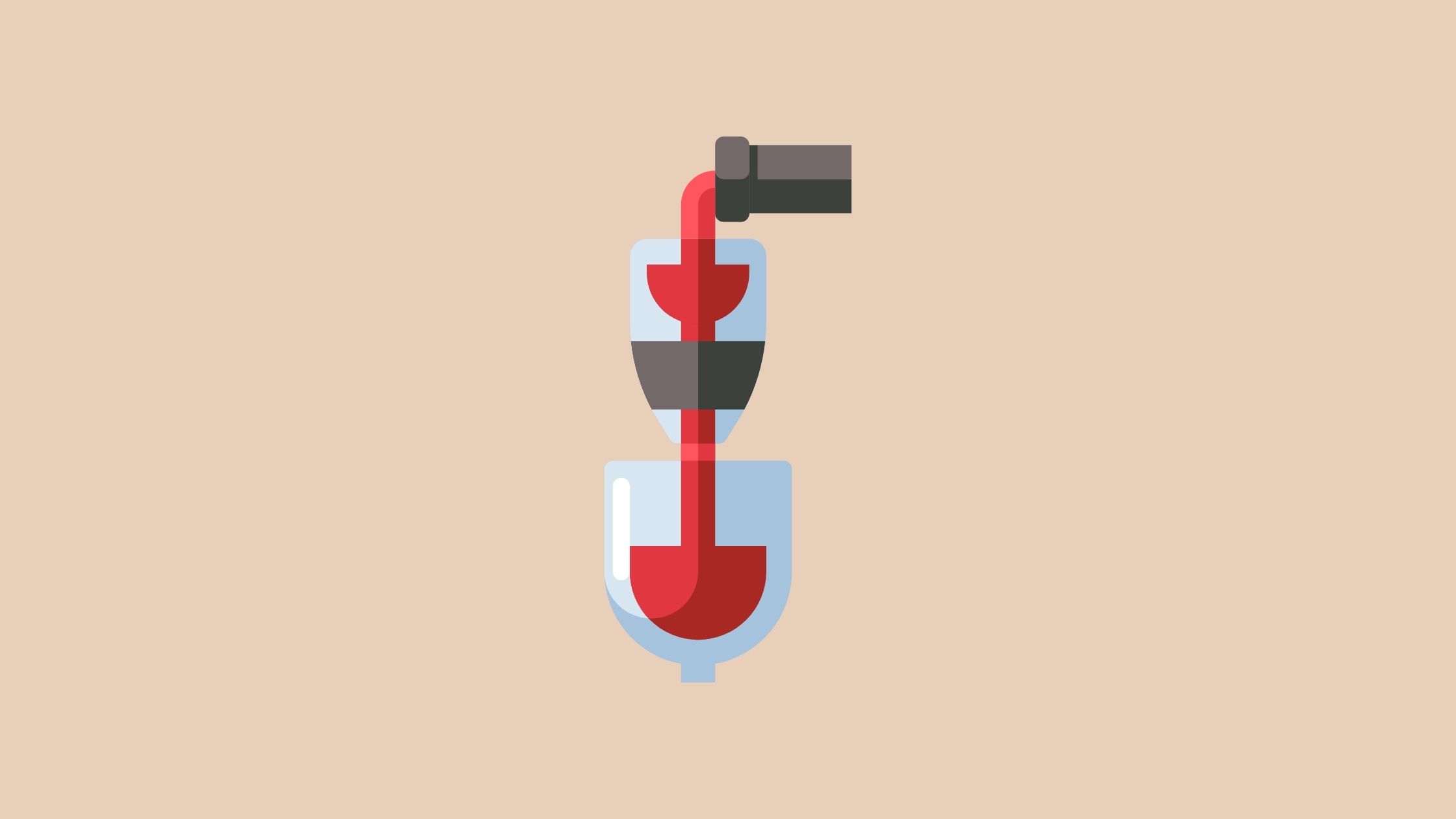Wine aerators have become more sophisticated these days. There are many models out there, from simple decanters to fancy high-tech pieces. Still, they all work similarly. Because wines need to “breathe”, aerators can make your vintage that much more enjoyable.
The question is, do aerators work for all wine styles? Do you use an aerator for white wine? Let’s talk about wine aeration and what this handy tool can make for your wine.
Before we get started, however, know there are no universal rules for wine. Every bottle and wine drinker is different — we like different things! Having said that, let’s discuss whether you should (or should not) use an aerator for white wine.
What Do Aerators Do?
Aerators might all look different, but they all serve the same purpose — they expose the wine to air, and by air, we mean oxygen.
Wine is a complex beverage. Fermentation turns grape juice into an alcoholic drink, but it creates dozens of aromatic compounds in the process. These volatile molecules make the wine taste like anything, from apples and berries to leather and tobacco leaves.
Sometimes, these aromatic compounds are a bit shy and must be agitated to volatilize. That’s why we swirl the wine, to release all those fragrant molecules.
Well, aerating wine helps you release some of these aromas, literally making it more striking. But here’s the thing. Not all wines need that extra help. In fact, delicate wines might not benefit at all from aeration. After all, agitating the wine brings forward its fruit scents, but earthbound or floral aromas might be lost beneath all that fruit.
There’s no doubt most wine bottles benefit from a bit of oxygen. Here are six best wine aerators that will bring out the best in your wines!
Should We Aerate White Wine?
There are two main types of white wine. The most common is crisp and fruity white wine fermented in stainless steel and bottled without ageing. The second type is white wine aged in oak, most commonly known as Chardonnay.
Both wine styles can benefit from aeration, as they will appear fruitier. Nevertheless, white wine is often already fruity and bright, so you might not notice much difference. Oak-aged white wine will benefit the most from aeration, but there’s no harm in aerating every bottle you open.
Keep in mind that white wine is best enjoyed chilled, and low temperatures may make your wine less vivid, in terms of taste. Aromas volatilize along with the evaporating alcohol. So, if your white wine is inexpressive, even after aerating, you might be serving it too cold.
There’s good news. By pouring wine through an aerator, you’re also warming it up a little, so if your wine bottle came straight out of the fridge, aeration (and decanting) could elevate its temperature a few degrees.
When Not To Aerate Wine
Whether you’re pouring red or white wine, there are times when you might want to pour the wine undisturbed. Aerating might make wine more expressive, but it can also make it unidimensional.
When you aerate wine, you excite its aromatic molecules, most of which are esters — molecules that smell like fruits, from berries to apples. Esters dominate the bouquet in most wines.
Still, esters can be so expressive that they can make other aromatic compounds hard to pick up, including pyrazines (herbal aromas,) terpenes (floral aromas,) thiols (citrusy scents,) and geosmin (the smell of damp earth and mushrooms.)
If you suspect your wine is more than just fruit, typical of well-aged wine and wine fermented in oak, pour it without aerating, and swirl it as you drink. That way, you’ll enjoy its complexity without missing out on its most subtle scents!
The Bottom Line
Should we aerate white wine? In most cases, yes. Aerate red, white and rosé wines to make them more expressive and fruitier. Still, you should always taste the wine before doing anything to it and evaluate if it is expressive enough or too delicate or complex for aeration.
Aeration is not always needed or beneficial. You’ll have to try aerating a few wines to determine if a particular bottle of wine will benefit from the somewhat violent procedure. Experimentation is critical in mastering the art of serving and enjoying wine. Aerate your favorite wine and try it against unoxygenated wine. See what works for you!
Recommended Reading
What Are Tannins in Wine: Everything You Need To Know
Do you wonder what tannin is and how it affects your wine? Learn everything you need to know about this compound here!
Top 30 Wine Facts Every Wine Lover Should Know
The best part about wine is that the more you know, the more you enjoy! Here are 30 wine facts ever wine lover should know!
How To Hold A Wine Glass Properly
Does holding a wine glass properly matters? Does it really affect the taste of your wine? And if so, why? Read more to find out.
How to Decant Wine Without a Decanter
Decanters can help enhance the taste of your wine. But what if you don't have one? Here’s how to decant wine without a decanter!
6 Best Wine Aerators of 2022
There’s no doubt most wine bottles benefit from a bit of oxygen. Here are six best wine aerators that will bring out the best in your wines!
9 Best Stemware For Red Wine
If you're a red wine lover, here are 9 stemware options and why they make such great choices for those who love red wines!

